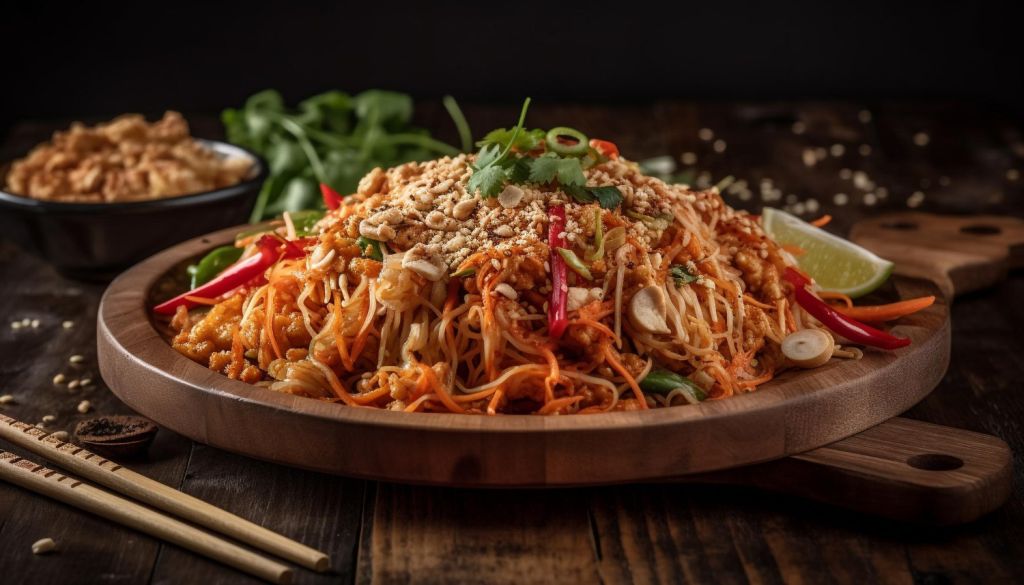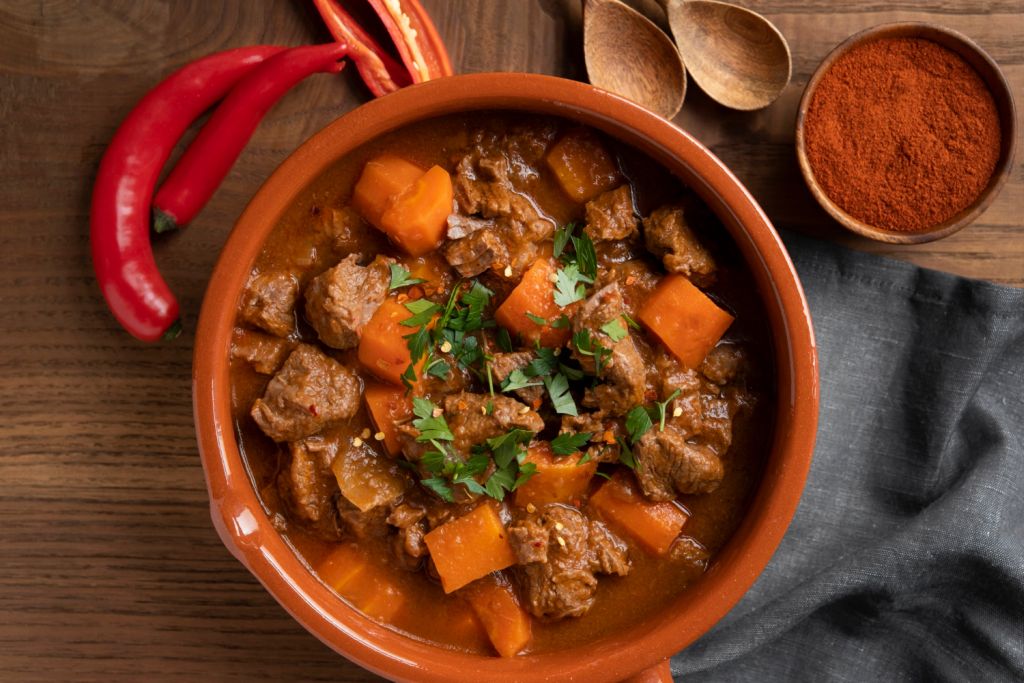10 Local Dishes You Must Try When Traveling to Southeast Asia

Southeast Asia is a treasure trove for food lovers, where vibrant spices dance with fresh ingredients to create unforgettable flavors. This region is celebrated not only for its breathtaking landscapes but also for its exceptional culinary diversity. Each country offers a unique taste experience, making it a paradise for anyone eager to explore new flavors and cultures.
The food here is more than just sustenance; it’s a celebration of life, heritage, and community. With a rich palette of tastes and textures, the local cuisines of Southeast Asia are a testament to centuries of tradition and innovation. Travelers and culinary explorers alike are drawn to the bustling markets and aromatic street stalls that promise a sensory adventure unlike any other.
The Top 10 Local Dishes You Must Try
1. Pad Thai – Thailand
One cannot discuss Southeast Asian cuisine without mentioning Pad Thai. This stir-fried noodle dish, originating from Thailand, combines a harmonious blend of sweet, sour, and savory flavors. Typically made with rice noodles, shrimp or chicken, tofu, peanuts, and lime, it’s a staple on every foodie’s list. Bangkok’s bustling street stalls are the go-to places for this iconic dish.
2. Pho – Vietnam
Pho is the soul-soothing noodle soup that represents Vietnamese cuisine. A fragrant broth simmered with spices such as star anise and cinnamon envelops tender beef slices, rice noodles, and fresh herbs. Hanoi offers some of the most authentic bowls of Pho, where you can savor this comfort food on nearly every corner.
3. Nasi Goreng – Indonesia
Nasi Goreng, Indonesia’s beloved fried rice, is a flavorful combination of rice, kecap manis (sweet soy sauce), prawns or chicken, and aromatic spices. It’s often topped with a fried egg and served with crispy prawn crackers. Bali and Jakarta are hotspots where you can indulge in this delightful dish.
4. Laksa – Malaysia/Singapore
Laksa is a spicy noodle soup with a rich coconut milk base, popular in Malaysia and Singapore. It features rice noodles, seafood or chicken, and a vibrant blend of spices. Penang and Singapore’s Katong district are famous for their unique twists on this classic dish.
5. Adobo – Philippines
Adobo, often dubbed the national dish of the Philippines, is a savory stew made with marinated meat (typically pork or chicken) cooked in vinegar, soy sauce, garlic, and spices. It’s a comforting and versatile dish that’s best experienced in Manila’s local eateries.
6. Tom Yum Goong – Thailand
Tom Yum Goong is a hot and sour shrimp soup, bursting with Thai herbs, chili, and lime. Its bold flavors make it a favorite among spicy food lovers. The streets of Chiang Mai offer some of the finest servings of this zesty soup.
7. Rendang – Indonesia/Malaysia
Rendang is a slow-cooked dry curry known for its complex flavors and tender beef. This West Sumatran dish is cooked with coconut milk and a medley of spices, resulting in a rich and aromatic experience. Sumatra and Kuala Lumpur are renowned for their renditions of this culinary masterpiece.
8. Hainanese Chicken Rice – Singapore/Malaysia
Hainanese Chicken Rice is a simple yet flavorful dish consisting of poached chicken and fragrant rice, accompanied by chili and ginger sauces. Originally from Hainan, China, it’s a staple in Singapore and Malaysia, where it has been embraced as a beloved local favorite.

9. Bahn Mi – Vietnam
Bahn Mi is Vietnam’s answer to the sandwich, featuring a crispy baguette filled with meats, pickled vegetables, and fresh herbs. This French-inspired creation is a street food staple in Ho Chi Minh City, offering a taste of cultural fusion.
10. Amok – Cambodia
Amok is a traditional Cambodian dish of fish curry steamed in banana leaves. It’s a delicate blend of coconut milk, spices, and lemongrass, resulting in a fragrant and tender meal. Siem Reap is a must-visit destination to experience this unique dish.
The Ingredients and Techniques
Southeast Asian cuisine is defined by its use of fresh, local ingredients and unique cooking techniques. The dishes listed above often incorporate a variety of herbs, spices, and condiments that elevate their flavors.
Many dishes rely on aromatic bases, such as lemongrass, galangal, and kaffir lime leaves, to create depth and complexity. Spices like turmeric, coriander, and chili peppers are staples in many kitchens, adding warmth and heat to the dishes.
Traditional cooking methods, such as stir-frying, grilling, and steam cooking, are employed to preserve the ingredients’ natural flavors while enhancing their textures. These techniques reflect the region’s emphasis on simplicity and freshness in their culinary practices.
The Culinary Adventure
For those embarking on a culinary adventure, Southeast Asia offers countless opportunities to savor authentic local dishes. Exploring the region’s vibrant food markets, street food stalls, and family-owned restaurants is essential for an immersive experience.
Start your journey in Bangkok’s bustling markets, where the aroma of sizzling Pad Thai fills the air. Venture to Hanoi’s Old Quarter, where street vendors serve steaming bowls of Pho to hungry locals. In Bali, indulge in Nasi Goreng at a beachfront cafe as the sun sets over the ocean.
To truly appreciate these dishes, seek out establishments that specialize in traditional recipes passed down through generations. Engaging with local chefs and vendors can provide valuable insights into the culture and history behind each dish.
Cultural Significance and Stories
Each dish in Southeast Asia tells a story, reflecting the region’s rich cultural tapestry. The origins and variations of these dishes offer insight into the influences of geography, history, and migration.
Pad Thai, for example, was popularized during World War II amid a rice shortage, showcasing Thai resilience and resourcefulness. Pho’s fragrant broth is a nod to Vietnam’s French colonial past, while Rendang’s complex spice blend reflects Indonesia’s history as a spice trade hub.
Food plays a vital role in local customs and rituals, often serving as a means of celebration and community. Understanding the cultural significance of these dishes provides a deeper appreciation for the region’s diverse culinary landscape.
Health and Dietary Considerations
Travelers exploring Southeast Asia’s culinary offerings should be mindful of their dietary needs and preferences. While the region offers an abundance of delicious options, it’s essential to prioritize food safety and adapt to local ingredients.
To enjoy the cuisine responsibly, opt for reputable eateries and avoid street food that may not adhere to hygiene standards. For those with specific dietary requirements, such as gluten-free or vegetarian options, many dishes can be customized to accommodate personal preferences.
Learning basic phrases in the local language can help communicate dietary restrictions to vendors and restaurant staff. Additionally, travelers may consider carrying snacks or supplements to ensure their nutritional needs are met during their culinary adventures.
Conclusion
Southeast Asia is a food lover’s paradise, offering a kaleidoscope of flavors and experiences that are as varied as the region itself. From the bustling street stalls of Bangkok to the tranquil beaches of Bali, each dish is an invitation to explore and savor the cultural richness of this captivating part of the world.
By understanding the ingredients, techniques, and stories behind these dishes, travelers can gain a deeper appreciation for the art of Southeast Asian cuisine. Whether you’re a seasoned culinary adventurer or a curious newcomer, this region promises a gastronomic journey that will leave an indelible mark on your taste buds and memories.
For those ready to embark on their next culinary adventure, the world of Southeast Asian cuisine awaits. Bon appétit!


